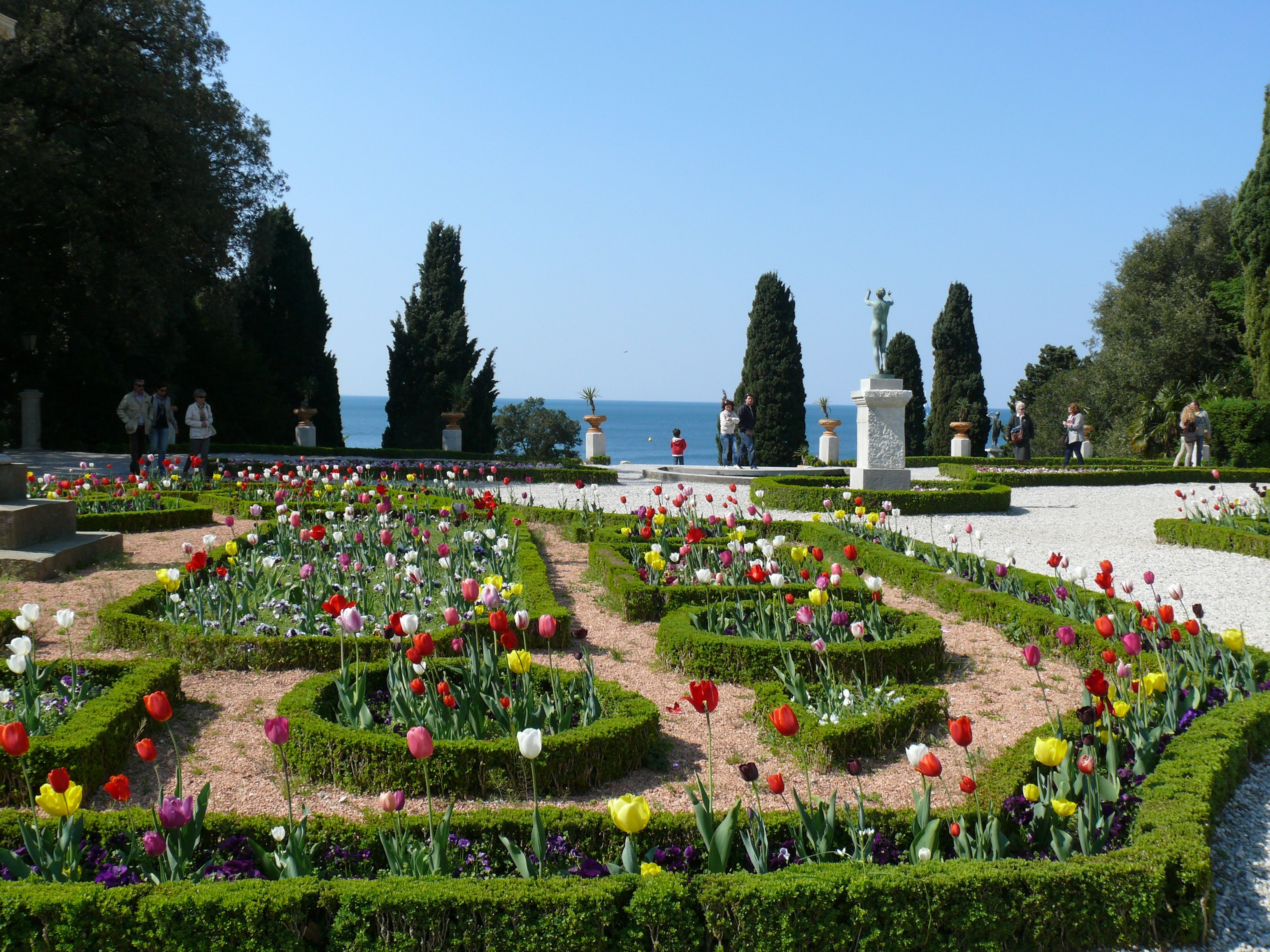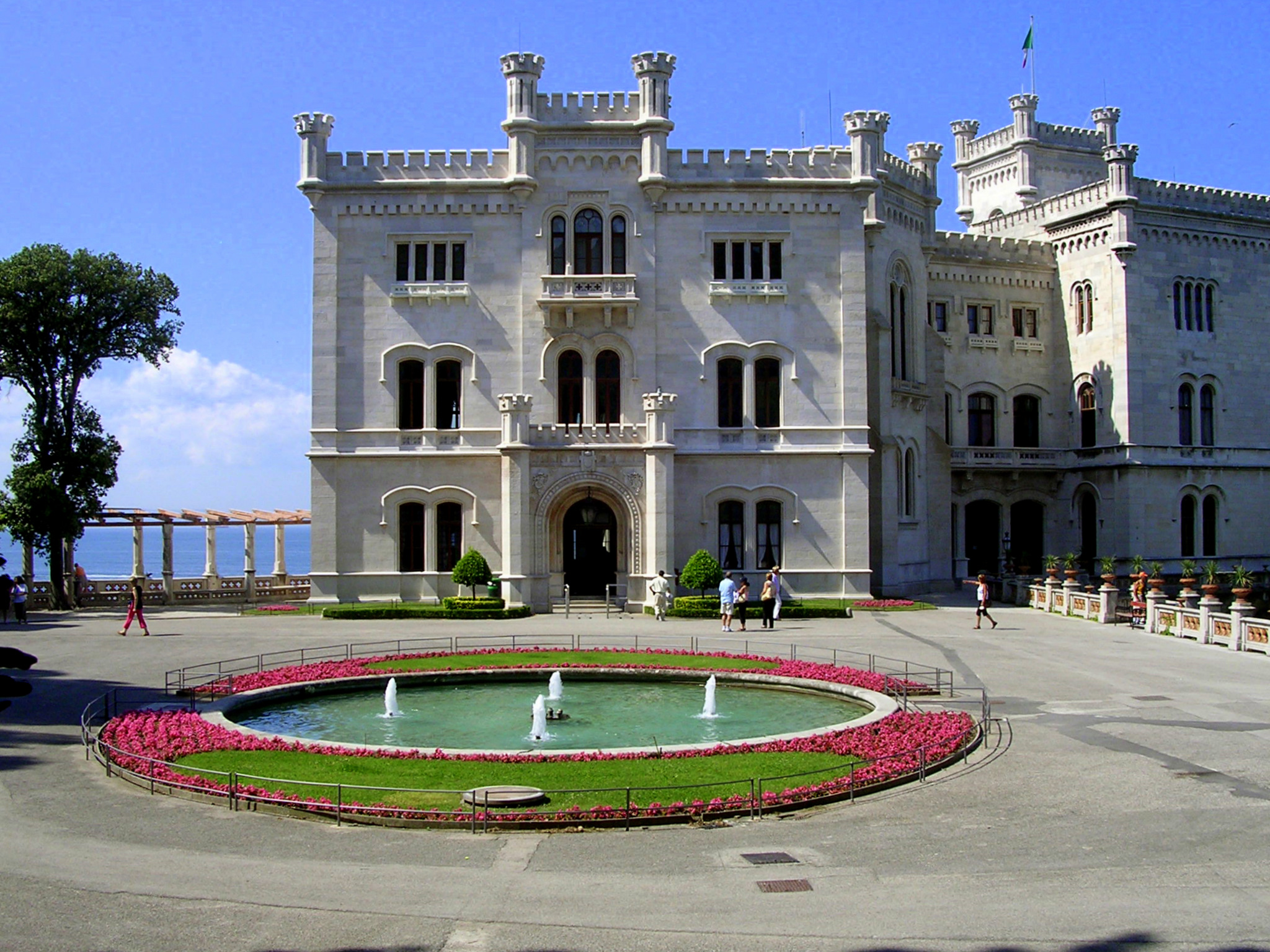
Miramare Castle
This post is also available in:
 Italiano (Italian)
Italiano (Italian)
The Miramare Castle stretches from the peninsula of Grignano, on the Gulf of Trieste. A 22-hectare romantic park frames the castle and then degrade towards the sea. Until 1855 the park area was a barren and fallow land, that the young and romantic Archduke Maximilian of Habsburg transformed into a beautiful garden, to frame the white, eclectic castle. It seems that the young archduke himself, a botany enthusiast, to design and treat the hilly landscape, helped by the gardener Jelinek. The result is this coastal garden, nestled on the little hill, along which meander the winding paths, ladders and a parterre with terraces facing west.
The archduke also wanted a real laboratory of botany, where to challenge the cold Trieste winters to acclimatize exotic very demanding species. Inside special scenic, peculiarities were included, such as the lookout, Swan Lake, iron pergolas, the marina, the Castelletto and the Koffee-Haus.
THE PARK
As a partial remedy against the bora (the strong wind that often sweeps Trieste), the Archduke had planted a thick forest of Austrian pine (Pinus nigra) as a windbreak, a device that was later imitated by other properties along the coast.
From the entrance, an avenue leads to the castle, built in Istrian stone. From here we find a monumental pergola, wrapped in a century-old wisteria, memories of trips to South Italy: heading north we arrive at a lake surrounded by groves of Chamaerops humilis, and then to the next and bigger Swan Lake, at the centre of which blooms paulownia (Paulownia tomentosa); and finally to the bamboo grove and the Mediterranean formed by laurel (Laurus nobilis) and strawberry trees (Arbustus unedo).
Heading south, however, the pergola leads to the formal garden and terraced gardens, open to the sea and the sun. The first consisted of the parterre of box hedges trimmed, classical sculptures (copies of famous ancient models), and, at one time, annual blooms, tulips, Salvia splendens and wallflowers, flowers beloved to the archduke, including the yellow wallflower (Erysimum cheiri), collected by Jelinek among the rocks near Duino Castle.
From the formal garden, with terraces and stairs, we reach the sea, in a location surrounded by beautiful live oaks (Quercus ilex), cypress (Cupressus sempervirens) and Aleppo pine (Pinus halepensis).
This post is also available in:
 Italiano (Italian)
Italiano (Italian)
Contatti
Viale Miramare - 34151 Trieste(TS)
http://www.castello-miramare.it/
Altre info
Apertura castello: ore 9.00 - 19.00 tutti i giorni dell’anno (chiusura biglietteria ore 18.30). Da novembre a febbraio, a partire dalle ore 16.00, e nei mesi di marzo e ottobre a partire dalle ore 17.00, l'accesso al Castello è possibile solo attraverso l'ingresso principale (lato mare -


